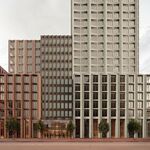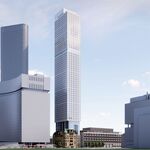timeo
New Member
So, being a provider of public transportation, the TTC probably doesn't naturally spend an inordinate amount of time pondering the impacts that service upgrades have on the nearby built environment, but I was wondering if there have been any studies or reports done on the impacts that Transit City will have on land use and the built environment.
I know that in some of the Transit City documents, there's mention of existing land uses (for example the Don Mills LRT factors the number of businesses, the number of people etc in whether the LRT should travel along Broadview, Bayview or Pape), but aside from this and a mention of the Finch LRT and why it doesn't go on the hydro corridor instead vs on Finch Ave., there doesn't seem to be much in the way of land use implications of the entire project.
Have I just not been searching hard enough or have there been no studies on this? Given the emphasis on transit-oriented development these days, I would've thought that the city or the TTC would have looked into this already. If anybody can point me out in the right direction, or start a discussion on this, that'd be fabulous! Thanks.
I know that in some of the Transit City documents, there's mention of existing land uses (for example the Don Mills LRT factors the number of businesses, the number of people etc in whether the LRT should travel along Broadview, Bayview or Pape), but aside from this and a mention of the Finch LRT and why it doesn't go on the hydro corridor instead vs on Finch Ave., there doesn't seem to be much in the way of land use implications of the entire project.
Have I just not been searching hard enough or have there been no studies on this? Given the emphasis on transit-oriented development these days, I would've thought that the city or the TTC would have looked into this already. If anybody can point me out in the right direction, or start a discussion on this, that'd be fabulous! Thanks.





